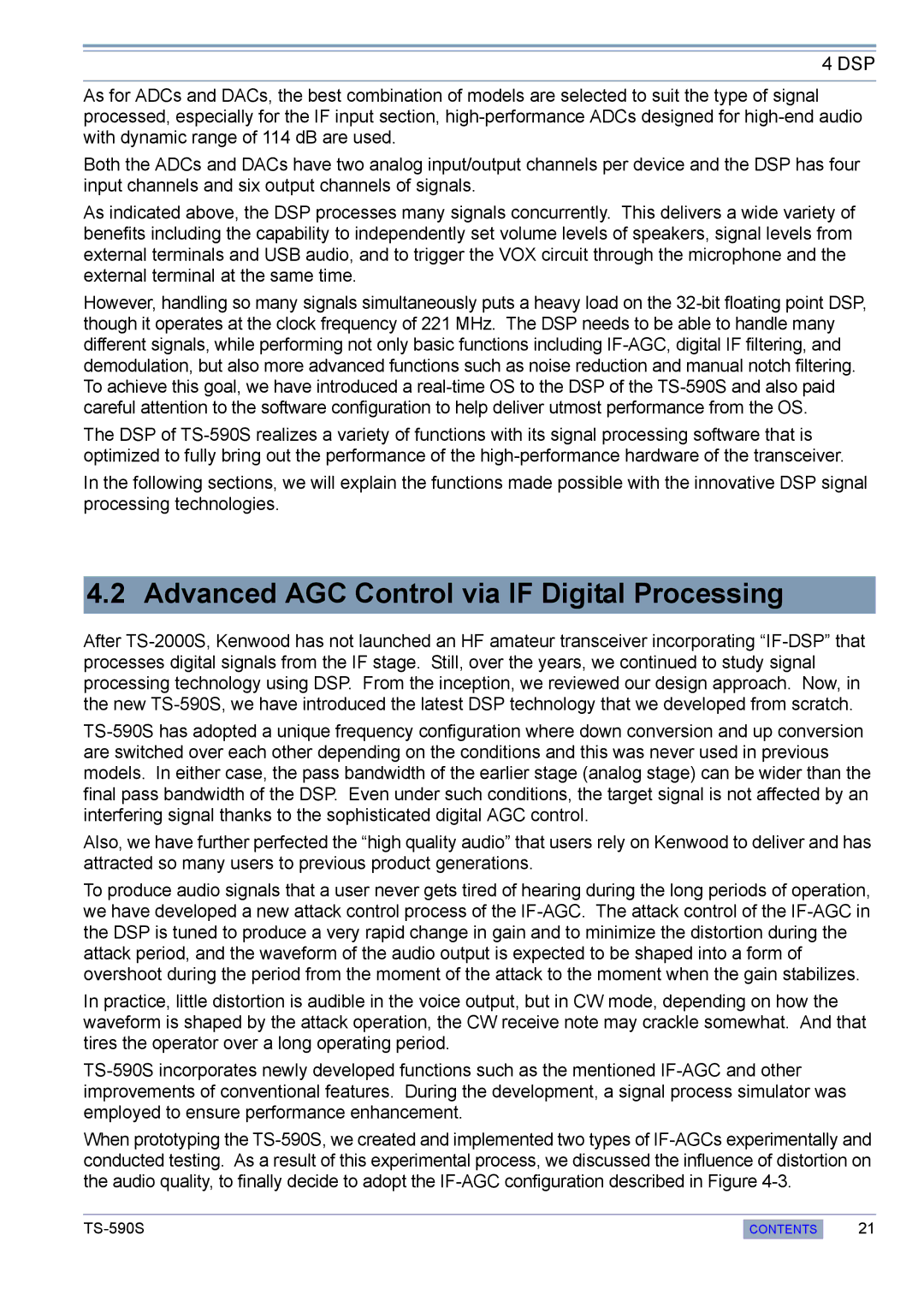4 DSP
As for ADCs and DACs, the best combination of models are selected to suit the type of signal processed, especially for the IF input section, high-performance ADCs designed for high-end audio with dynamic range of 114 dB are used.
Both the ADCs and DACs have two analog input/output channels per device and the DSP has four input channels and six output channels of signals.
As indicated above, the DSP processes many signals concurrently. This delivers a wide variety of benefits including the capability to independently set volume levels of speakers, signal levels from external terminals and USB audio, and to trigger the VOX circuit through the microphone and the external terminal at the same time.
However, handling so many signals simultaneously puts a heavy load on the 32-bit floating point DSP, though it operates at the clock frequency of 221 MHz. The DSP needs to be able to handle many different signals, while performing not only basic functions including IF-AGC, digital IF filtering, and demodulation, but also more advanced functions such as noise reduction and manual notch filtering. To achieve this goal, we have introduced a real-time OS to the DSP of the TS-590S and also paid careful attention to the software configuration to help deliver utmost performance from the OS.
The DSP of TS-590S realizes a variety of functions with its signal processing software that is optimized to fully bring out the performance of the high-performance hardware of the transceiver.
In the following sections, we will explain the functions made possible with the innovative DSP signal processing technologies.
4.2 Advanced AGC Control via IF Digital Processing
After TS-2000S, Kenwood has not launched an HF amateur transceiver incorporating “IF-DSP” that processes digital signals from the IF stage. Still, over the years, we continued to study signal processing technology using DSP. From the inception, we reviewed our design approach. Now, in the new TS-590S, we have introduced the latest DSP technology that we developed from scratch.
TS-590S has adopted a unique frequency configuration where down conversion and up conversion are switched over each other depending on the conditions and this was never used in previous models. In either case, the pass bandwidth of the earlier stage (analog stage) can be wider than the final pass bandwidth of the DSP. Even under such conditions, the target signal is not affected by an interfering signal thanks to the sophisticated digital AGC control.
Also, we have further perfected the “high quality audio” that users rely on Kenwood to deliver and has attracted so many users to previous product generations.
To produce audio signals that a user never gets tired of hearing during the long periods of operation, we have developed a new attack control process of the IF-AGC. The attack control of the IF-AGC in the DSP is tuned to produce a very rapid change in gain and to minimize the distortion during the attack period, and the waveform of the audio output is expected to be shaped into a form of overshoot during the period from the moment of the attack to the moment when the gain stabilizes.
In practice, little distortion is audible in the voice output, but in CW mode, depending on how the waveform is shaped by the attack operation, the CW receive note may crackle somewhat. And that tires the operator over a long operating period.
TS-590S incorporates newly developed functions such as the mentioned IF-AGC and other improvements of conventional features. During the development, a signal process simulator was employed to ensure performance enhancement.
When prototyping the TS-590S, we created and implemented two types of IF-AGCs experimentally and conducted testing. As a result of this experimental process, we discussed the influence of distortion on the audio quality, to finally decide to adopt the IF-AGC configuration described in Figure 4-3.

